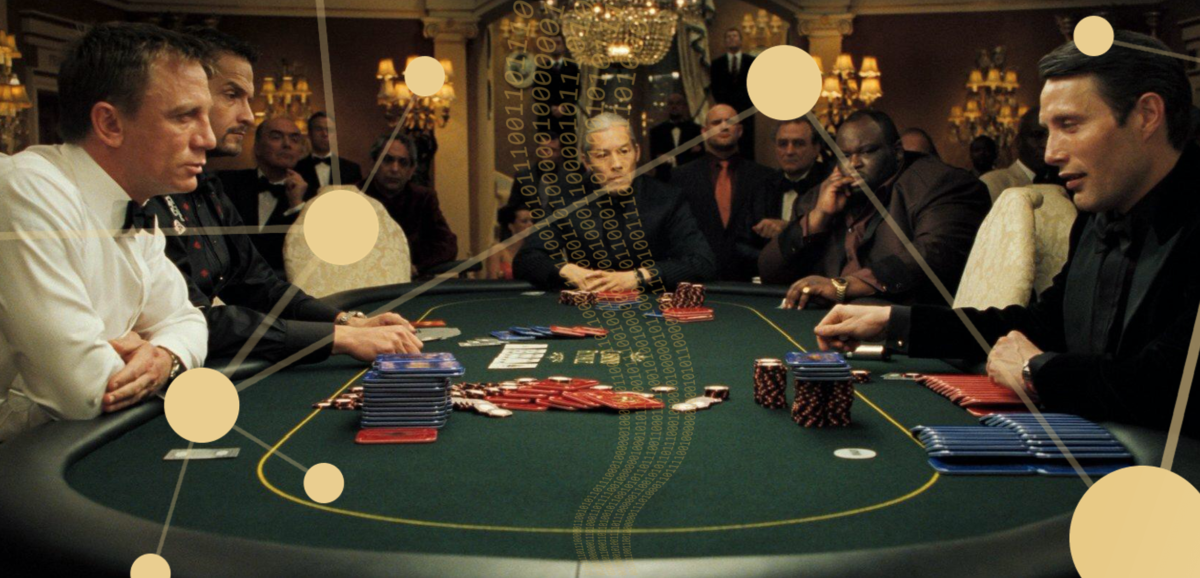Recent technologies and innovations are making their impact on a lot of industries, including the gambling industry. Major improvements and advancements can be seen at a customer’s gaming experience at casinos and their games, e.g. poker, blackjack, or roulette. Furthermore, technologies are redefining the security of casinos and increasing safety for the players. Three major technology trends can be identified in the gambling industry: virtual reality, facial recognition and smart camera safety systems, and cryptocurrencies.
Virtual reality (VR) is used for online casinos where you are able to play games, e.g. slot machines or poker with wearable capabilities. A VR headset, for instance, creates an authentic gambling experience for players and allows them to connect with other members of the online casino and have a completely immersive gambling experience. You basically only need the appropriate equipment and hardware to access the games and you are ready to play. The platform from PokerStars VR is already providing the first version of this VR gambling experience. There you can play the Texas Hold’em version of poker in a virtual environment with realistic chip and card movements. Moreover, you are able to see other players as individualized avatars with interactive accessories. An illustration of this VR poker environment is shown below.

 Pokerstars VR
Pokerstars VR
To increase safety and security, Chinese casinos in Macau are implementing facial recognition and artificial intelligence to monitor the players and gamblers. Security cameras scan the faces of players in the casino, people arriving, and also license plates of arriving cars. In that way, the software is able to detect banned or addicted gamblers or even criminals. Furthermore, the smart system can also identify known high rollers or VIPs who are likely to spend more money in the casino as they are putting down high-risk bets. This makes it easier for the casino to immediately assign staff to personalize the special VIP treatment for them and make sure that they stay around longer.

 Face Recognition
Face Recognition
Cryptocurrencies, e.g. the well-known types of Bitcoin or Ethereum, and its underlying technology blockchain are gaining popularity in the gambling industry. For players, it is convenient and beneficial to use them as a payment method in the online casinos as they might not feel comfortable about sharing details about their banking details online. The disintermediary characteristic of blockchain allows the players to avoid connecting their bank account to their casino account. Also, the blockchain takes a record of all transactions made in the chain and is protected in its decentralized infrastructure. Therefore, the risk of fraud is very low. However, there is still some time needed until all online casinos accept payments in cryptocurrencies.
 Bitcoin as a Payment Method
Bitcoin as a Payment Method
It will be interesting to see which other technologies will affect the gambling industry overall. I am personally looking forward to trying out online VR poker; of course without any monetary stakes in the game.
References:
Blackjackonlineunitedkingdom.com. 2020. Bitcoin Casino | Become A Crypto King | Bitcoin Gambling Guide Here. [online] Available at: <https://www.blackjackonlineunitedkingdom.com/bitcoin-casino.html> [Accessed 8 October 2020].
Business Matters. 2020. Top 5 Mobile Gaming Tech Innovations. [online] Available at: <https://www.bmmagazine.co.uk/business/top-5-mobile-gaming-tech-innovations/> [Accessed 8 October 2020].
Greece Gambling Conference. 2020. Top Successful Global Trends In Online Gambling 2020 | Greece Gambling Conference. [online] Available at: <https://greece.affiliate.events/news/2020-s-top-innovations-and-trends-in-global-online-gambling-100687> [Accessed 8 October 2020].
Mobygeek.com. 2020. [online] Available at: <https://mobygeek.com/features/chinese-casinos-deploy-facial-recognition-and-ai-to-monitor-customers-6448> [Accessed 8 October 2020].
The European Business Review. 2020. Gambling Innovations In 2019 – The European Business Review. [online] Available at: <https://www.europeanbusinessreview.com/gambling-innovations-in-2019/> [Accessed 8 October 2020].
Pokerstars. 2020. Pokerstars VR On Steam. [online] Store.steampowered.com. Available at: <https://store.steampowered.com/app/886250/PokerStars_VR/> [Accessed 8 October 2020].
Wall-Street.com. 2020. Top 3 Technologies That Will Innovate Online Gambling In 2019 – Wall-Street.Com. [online] Available at: <https://wall-street.com/top-3-technologies-that-will-innovate-online-gambling-in-2019/> [Accessed 8 October 2020].



 Ghost Pacer Avatar
Ghost Pacer Avatar Ghost Pacer Technology
Ghost Pacer Technology Nike AR Glasses
Nike AR Glasses


